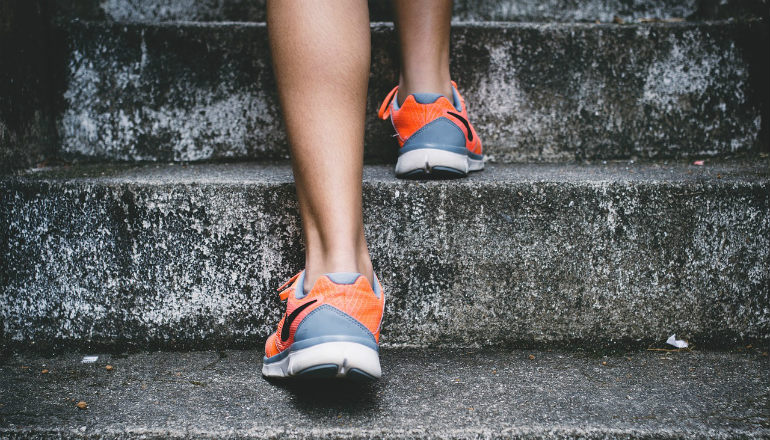
I think we can all agree that our feet and ankles take a beating throughout our lives. Not only do they have to support our entire body weight as we move about, but they also have to suffer the aftermath of sprains, strains, sports injuries, high heels, tight shoes, and other mishaps. Who among us hasn’t dealt with some sort of foot pain?
Recovery from these injuries often leaves our feet and ankles with very limited mobility. This can lead to problems ranging from a limited ability to walk or run properly all the way up to crippling injury or death due to a fall resulting in a broken hip or femur.
That’s a high price to pay for not performing regular maintenance that takes only a few minutes each day.
Pain in Our Body Often Begins in Foot Pain
I cannot overstate the level of importance your feet and ankles have when in relation to the two appendages that allow you to walk, run, squat, jump, and change direction as our bodies were designed to (we’re talking about yours legs here).
The feet and ankles are a complex system of small bones, muscles, and connective tissue. They are often overlooked in the greater scheme of our training, but as we get older they become more and more important. Tightness in the feet and ankles can also work its way up the body and show up as pain and/or weakness throughout the legs, hips, and lower back.

Given this, addressing foot pain and working on your ankles can have some serious impact when it comes to improving your physical fitness.
In the videos below, I’m going to show you a few exercises that can help improve range of motion and flexibility in the foot and ankle. Applying these to your daily mobility routine can help keep you moving easily and pain free for years to come.
How to Show Some TLC to Your Feet and Ankles
Earlier, I mentioned balance being influenced by your foot’s ability to move well. If your ankles are so stiff that it’s like you’re standing on stilts, you’re going to constantly run the risk of falling over. For long-term health and quality movement, your ankles and feet need to be able to adapt to your body in locomotion.
Step 1: Balance
A while back I was discussing this topic with a friend who’s a doctor of physical therapy. His recommendation for any issues in the ankles is, “Balance, balance, and more balance.”
If you’ve ever tried standing on one foot for as long as you can, you’ll certainly notice the muscles in your feet start to light up. Training balance is a great way to improve mobility, strength, and kinesthetic awareness (the muscle memory that allows your brain to sense what your bodies doing.)
For detailed instructions and video demonstration of how to both test and train your balance, click through to my article: Why You Need to Test Your Balance (Plus 3 Exercises to Improve It)
Step 2: Mobility
After balance, a good place to work next is mobility for the bottom of the feet. The tissues underneath our feet do a lot of work and don’t get a lot of TLC.
Follow along with this video and notice the difference after several minutes of work to loosen up these muscles and connective tissue of your feet. People who play high-impact sports with a lot of running and turning will benefit from this especially, but anyone will notice a difference with this technique.
Next, we’re going to move our way up the leg. In this video, I’ll show how you can get a really effective stretch in the Achilles’ tendon to loosen the ankle and help with your ability to squat, run, or walk.
This only takes a couple minutes per leg and can have some great benefits for your feet and ankles, especially if you’re a runner or if you wear high heels (both of which can really shorten your Achilles’ tendon over time).
Address Your Foot Pain, Love Your Ankles, Live an Active Life
You can cover a lot of ground with these basic exercises. There’s more that we can build upon with our feet, but this combination of balance work and mobility will help us establish a solid foundation. Once our balance is highly tuned and our feet and ankles are moving more freely, we can begin to play and experiment with different elements of training and mobility to make our feet and ankles even more durable and pliable.
To get started on having healthier and pain-free feet and ankles, try out what I’ve shown you here and reach out if you have any questions or issues.



































